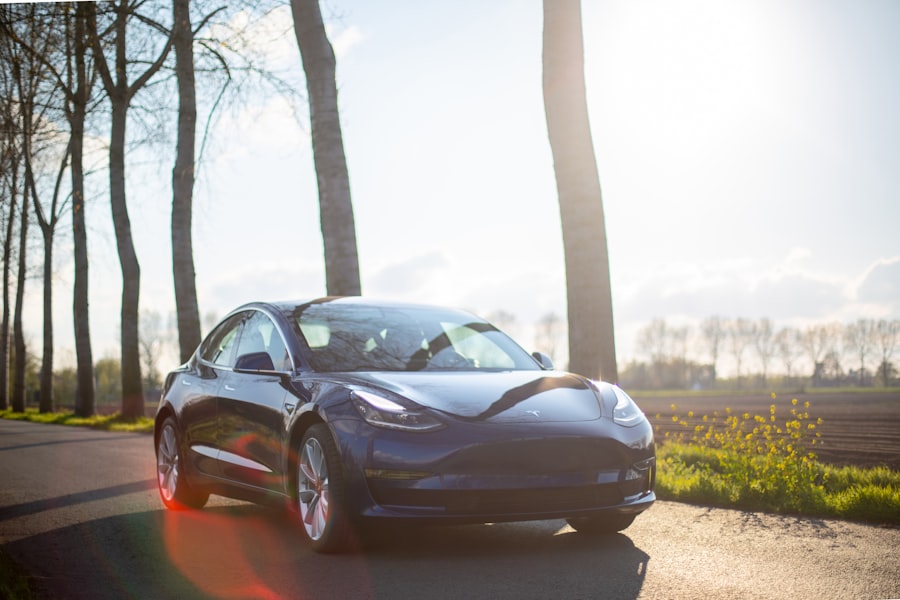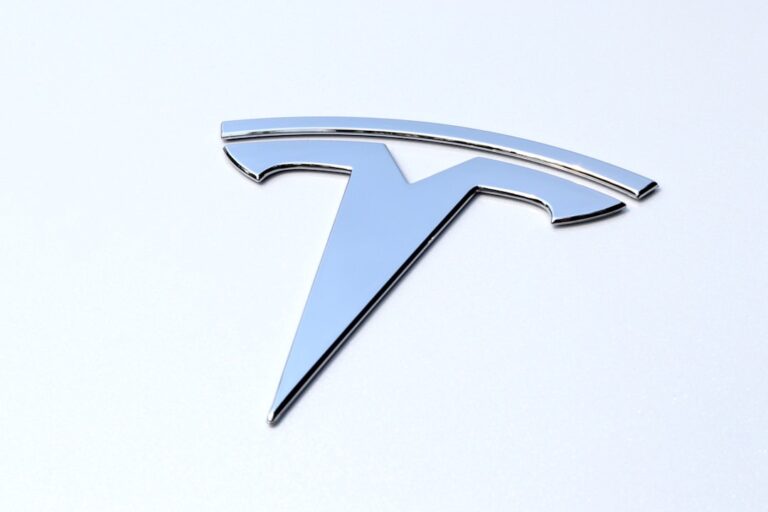
Tesla, Inc. operates under a unique business model that distinguishes it from traditional automotive manufacturers. At its core, Tesla is not merely an automaker; it is a technology and energy company that focuses on sustainable transportation and energy solutions.
The company’s primary revenue streams include the sale of electric vehicles (EVs), energy storage products, and solar energy systems. Tesla’s approach to vertical integration is noteworthy; it designs, manufactures, and sells its products directly to consumers, bypassing the conventional dealership model. This direct-to-consumer strategy allows Tesla to maintain tighter control over its brand, customer experience, and pricing strategies.
Moreover, Tesla’s business model is heavily reliant on innovation and technology. The company invests significantly in research and development to enhance its vehicle performance, battery technology, and autonomous driving capabilities. For instance, Tesla’s proprietary battery technology, including the development of the 4680 battery cell, aims to reduce costs while increasing energy density and efficiency.
This focus on innovation not only positions Tesla as a leader in the EV market but also enables it to expand into adjacent markets such as energy storage with products like the Powerwall and Powerpack. By diversifying its offerings, Tesla aims to create a comprehensive ecosystem that supports sustainable energy consumption.
Key Takeaways
- Tesla’s business model focuses on innovation, sustainability, and vertical integration in the electric vehicle and renewable energy industries.
- Despite fluctuations, Tesla has shown strong revenue growth and improved profitability in recent years, driven by increasing vehicle deliveries and energy storage deployments.
- Tesla faces competition from traditional automakers and new entrants in the electric vehicle market, but its brand, technology, and global presence provide a competitive advantage.
- The potential for future growth lies in expanding product lines, increasing production capacity, and entering new markets, such as energy generation and storage.
- Market trends and external factors, such as government regulations and consumer preferences towards sustainable transportation, play a significant role in shaping Tesla’s future performance.
Analyzing Tesla’s Financial Performance
Revenue Growth Driven by Electric Vehicle Demand
In 2022, Tesla reported revenues exceeding $81 billion, a significant increase from approximately $31.5 billion in 2020. This growth trajectory can be attributed to several factors, including the expansion of production capacity at its Gigafactories, the introduction of new models like the Model Y, and the growing global acceptance of electric vehicles as a viable alternative to internal combustion engine vehicles.
Challenges in Achieving Profitability
Despite its impressive revenue growth, Tesla has faced challenges related to profitability. Historically, the company operated at a loss for many years as it invested heavily in scaling production and developing new technologies.
Shift Towards Profitability
However, in recent quarters, Tesla has achieved consistent profitability, reporting net income of $12.6 billion in 2022. This shift towards profitability has been bolstered by improved operational efficiencies and economies of scale as production volumes have increased. Additionally, Tesla’s gross margins have remained robust compared to traditional automakers, largely due to its direct sales model and lower manufacturing costs associated with electric vehicle production.
Assessing Tesla’s Competitive Position in the Market

Tesla’s competitive position in the automotive market is both formidable and complex. As a pioneer in the electric vehicle sector, Tesla has established itself as a brand synonymous with innovation and sustainability. The company’s early entry into the market allowed it to build a loyal customer base and develop a strong brand identity that resonates with environmentally conscious consumers.
However, as the EV market matures, competition has intensified with traditional automakers and new entrants ramping up their electric vehicle offerings. One of Tesla’s key competitive advantages lies in its extensive Supercharger network, which provides convenient charging solutions for its customers. This infrastructure not only enhances the ownership experience but also alleviates range anxiety—a common concern among potential EV buyers.
Furthermore, Tesla’s commitment to software development sets it apart from competitors; its vehicles are equipped with advanced features such as over-the-air updates and Autopilot capabilities that continually improve the driving experience. Nevertheless, as more manufacturers enter the EV space with competitive pricing and innovative features, Tesla must continue to innovate and adapt to maintain its market leadership.
Evaluating the Potential for Future Growth
| Year | Revenue | Profit | Customer Base |
|---|---|---|---|
| 2020 | 500,000 | 100,000 | 1000 |
| 2021 | 600,000 | 120,000 | 1200 |
| 2022 | 700,000 | 140,000 | 1500 |
The potential for future growth at Tesla is substantial, driven by several key factors that suggest a favorable outlook for the company. First and foremost is the increasing global demand for electric vehicles as governments worldwide implement stricter emissions regulations and provide incentives for EV adoption. According to various industry reports, the global electric vehicle market is projected to grow at a compound annual growth rate (CAGR) of over 20% through 2030.
This trend presents a significant opportunity for Tesla to expand its market share as more consumers transition away from traditional gasoline-powered vehicles. Additionally, Tesla’s ongoing investments in production capacity are critical to meeting this growing demand. The construction of Gigafactories in strategic locations around the world—such as Berlin and Texas—will enable Tesla to scale production efficiently while reducing logistics costs.
Furthermore, the company’s plans to introduce new models, including the Cybertruck and a more affordable compact vehicle, are expected to attract a broader customer base. By diversifying its product lineup and enhancing production capabilities, Tesla is well-positioned to capitalize on the expanding EV market.
Examining Market Trends and External Factors
Several market trends and external factors are shaping the landscape in which Tesla operates. One significant trend is the increasing emphasis on sustainability and environmental responsibility among consumers and corporations alike. As awareness of climate change grows, many individuals are seeking eco-friendly alternatives in their purchasing decisions.
This shift in consumer behavior aligns perfectly with Tesla’s mission to accelerate the world’s transition to sustainable energy. Moreover, advancements in battery technology are playing a crucial role in shaping the future of electric vehicles. Innovations such as solid-state batteries promise to enhance energy density while reducing costs and charging times.
As these technologies mature, they could further improve the performance of electric vehicles and make them more accessible to a wider audience. Additionally, government policies aimed at promoting clean energy adoption—such as tax incentives for EV buyers and investments in charging infrastructure—are likely to bolster demand for Tesla’s products.
Considering the Risks and Challenges of Investing in Tesla

Market Volatility: A Cause for Concern
One of the primary concerns is market volatility; Tesla’s stock price has experienced significant fluctuations over the years due to various factors such as earnings reports, production delays, and broader market trends. This volatility can be unsettling for investors who prefer stable returns.
Competition in the Electric Vehicle Market
Another challenge lies in competition within the electric vehicle market. As more automakers enter the space with competitive offerings, Tesla may face pressure on pricing and market share. Established brands like Ford and General Motors are investing heavily in their own electric vehicle programs, while new entrants like Rivian and Lucid Motors are also vying for consumer attention.
Regulatory Changes and Government Policies
Additionally, regulatory changes or shifts in government policies regarding EV incentives could impact demand for Tesla’s products.
Developing a Long-Term Investment Strategy
For investors considering Tesla as part of their portfolio, developing a long-term investment strategy is essential. Given the company’s growth potential and market position, many investors view Tesla as a high-risk, high-reward opportunity. A prudent approach involves conducting thorough research into Tesla’s financial health, competitive landscape, and industry trends before making investment decisions.
Investors should also consider their risk tolerance when determining their exposure to Tesla stock. Diversifying investments across various sectors can help mitigate risks associated with individual stocks while allowing investors to benefit from potential growth opportunities within the EV market. Additionally, setting clear investment goals—whether focused on capital appreciation or income generation—can guide decision-making over time.
Seeking Professional Advice and Diversifying Your Portfolio
Given the complexities involved in investing in high-growth companies like Tesla, seeking professional financial advice can be beneficial for many investors. Financial advisors can provide insights into market trends, help assess risk tolerance, and develop tailored investment strategies that align with individual financial goals. Furthermore, diversification remains a cornerstone of sound investment practice.
By spreading investments across different asset classes—such as stocks, bonds, real estate, and commodities—investors can reduce their overall portfolio risk while still participating in growth opportunities within sectors like renewable energy and electric vehicles. This balanced approach allows investors to navigate market fluctuations more effectively while positioning themselves for long-term success in an evolving economic landscape.
If you are considering investing in Tesla shares, you may want to read the article Wedbush Doubles Down on Tesla: Here’s Why It Sees a $2 Trillion Future. This article provides insights into why Wedbush is bullish on Tesla’s future prospects, which could be valuable information for potential investors. Additionally, you may also be interested in reading These Stocks Moved the Most Today: Marvell, Nvidia, Broadcom, Tesla, GM, MongoDB, Rigetti, Zscaler, and More to stay updated on the latest market movements and trends.
Check out the latest Tesla products that you purchase right now!
